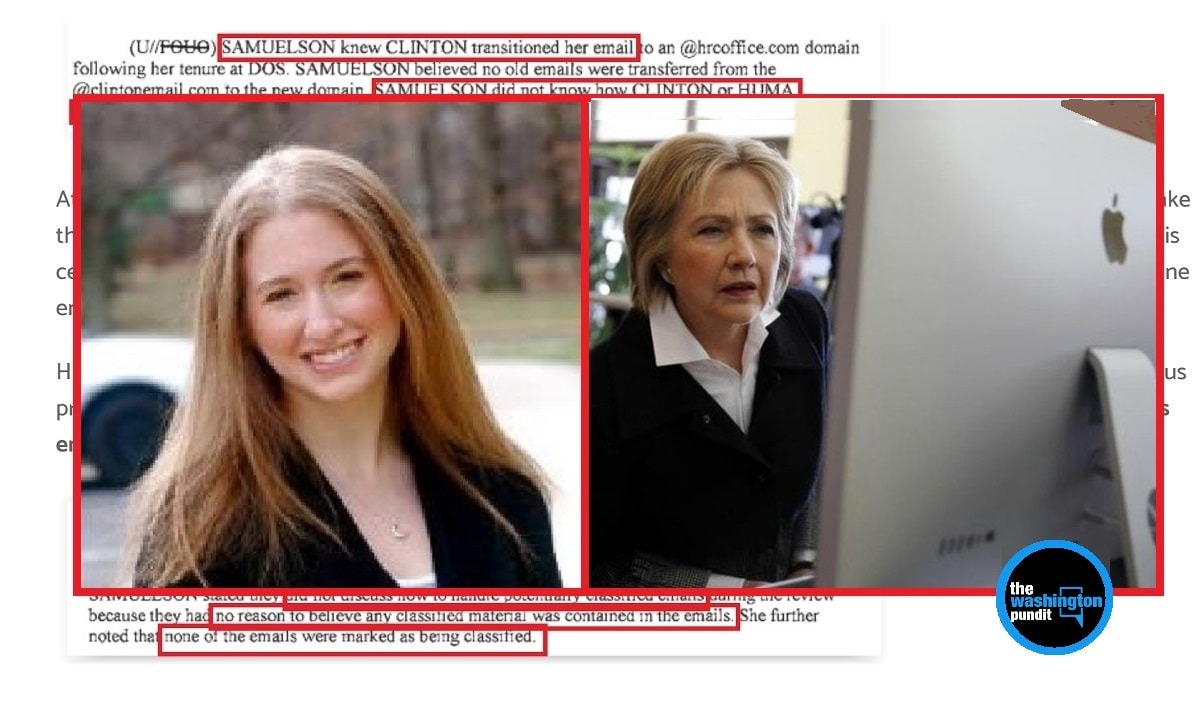Hillary Clinton likely attempted to alter her emails in an effort to cover up illegal activities rather than just deleting emails as was previously reported. Judicial Watch’s efforts to obtain her attorney’s interview with the FBI show this and other criminal actions!
Judicial Watch again has performed a service to the country. In its efforts to get to the truth, Judicial Watch may have uncovered another shocking revelation in the Hillary Clinton email saga.
In June of 2019 Judicial Watch posted the interview notes it received from the government between the FBI and Hillary Clinton’s attorney Heather Samuelson. Hidden in the deposition are bits of information that when compared to information made public to date in the Hillary email case make no sense at all.
In the interview Samuelson states to the FBI’s Peter Strzok that she was assigned the duty of reviewing Hillary’s emails and in doing so, Samuelson reviewed the emails on her laptop both at her apartment and in Cheryl Mills’ office.

As is the case with the entire Hillary email coverup, the Clintons and her team were above the law. Others have been thrown in jail for similar actions. (For example, one NSA employee who brought hacking tools home was sentenced to 66 months in prison.)
Samuelson was assigned the task of obtaining Hillary’s emails for her tenure as Obama’s Secretary of State. After making a request for Hillary’s emails from Platte River Networks (PRN), the firm that administered Hillary’s personal email system, Samuelson reviewed them and noticed that some of Hillary’s emails were missing.

Samuelson stated that she believed that Hillary’s emails that were missing for the period between January 2009 through March 2009 must have not been backed up.
But this makes no sense. Classification only works on classification ‘enabled’ systems. For example, in a typical agency, when a document is created it is immediately stamped electronically and visually (water mark or text stamp) with the classification level.From that point forward, when the document is stored on a server, sent via email, or printed out, it will go through a number of security controls that will prevent certain operations on it. For example, if you are a user with lower level security clearance,you won’t be able to see the document name, its metadata, content, or be able to print it. In fact, the document won’t even show up in any of the searches.
This is where her story really begins to not make sense. There is no way that a backup would be deleted of anyone’s emails in the government, especially those of someone at the level of the Secretary of State.
The classified email systems used by the government are highly sophisticated (per an IT expert we contacted). These classification systems are fully automated in order to remove the human factor/errors from the process. These systems also control the entire document life cycle from its creation to its declassification and are tied to the organization’s access control and audit systems. So you can see exactly who and when the document was viewed (even which pages were views, how long it was on the screen, etc.). If there is no classification system in place, then all of the documents on the server can be considered breached. This is even without any proof of an external hacker accessing it.
The reason for this is the exact scenario described by Samuelson, i.e. one in which an individual such as a system/personal attorney without the proper security clearance would view and make electronic/physical copies of the documents.
Read More













